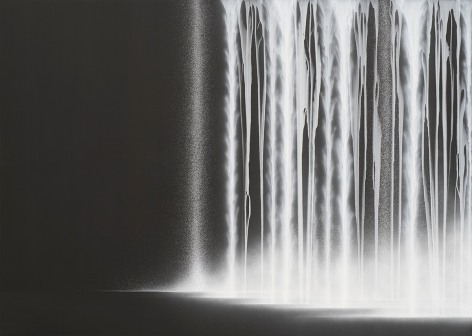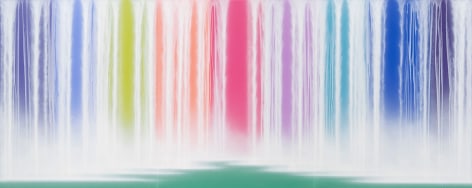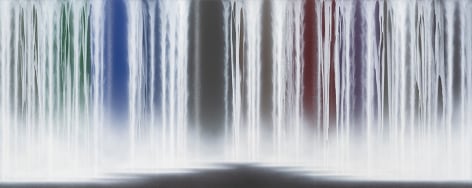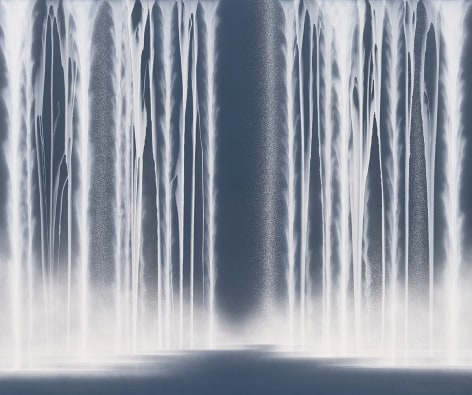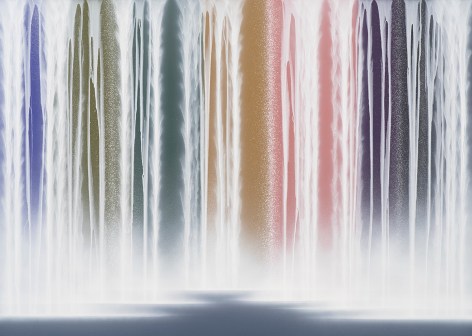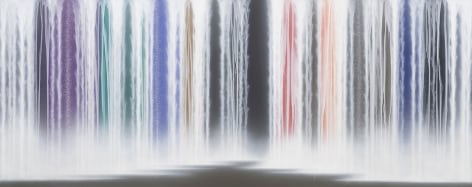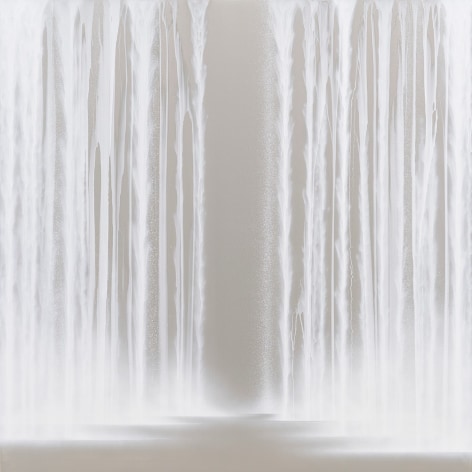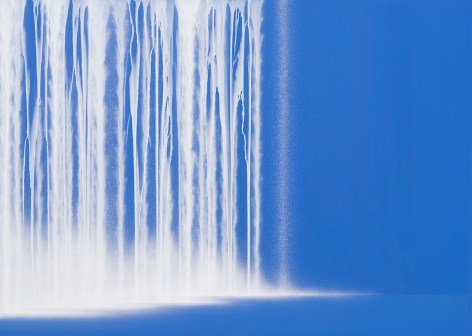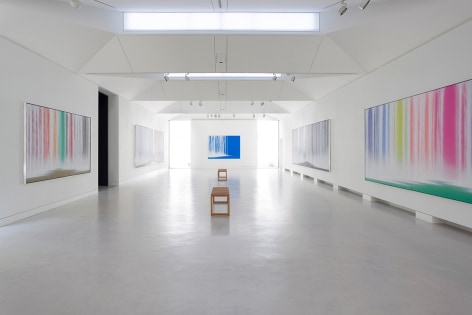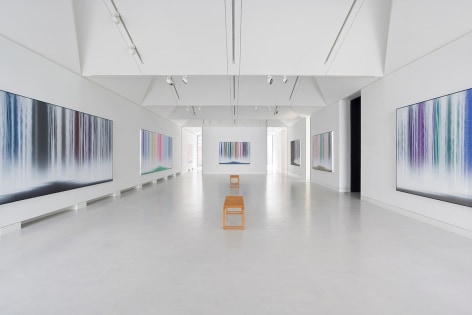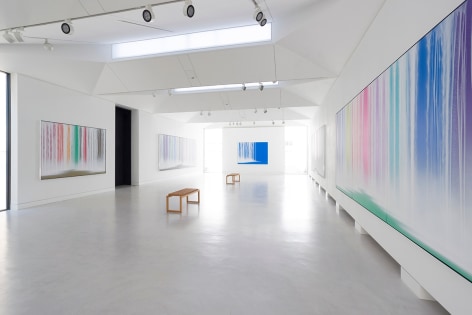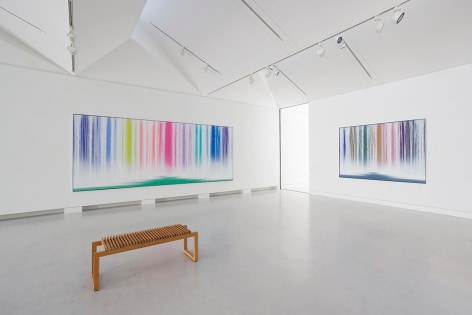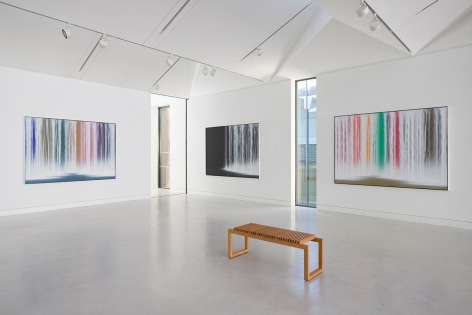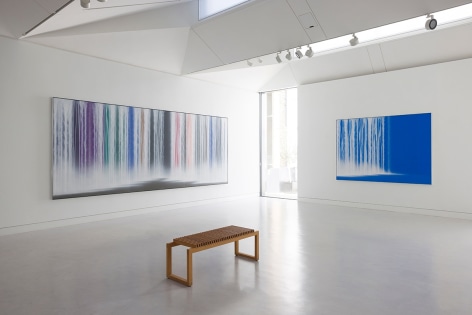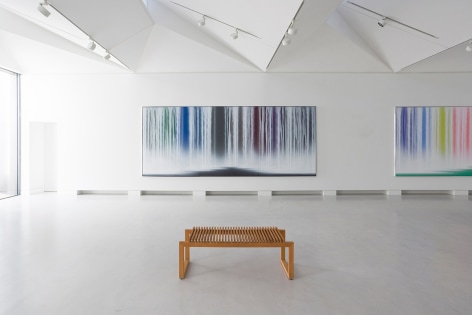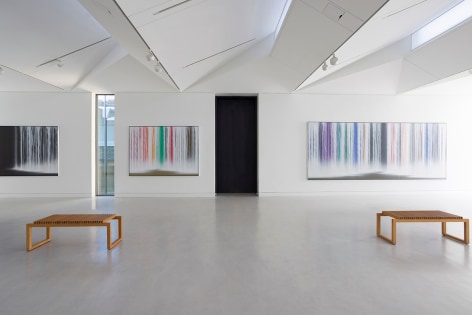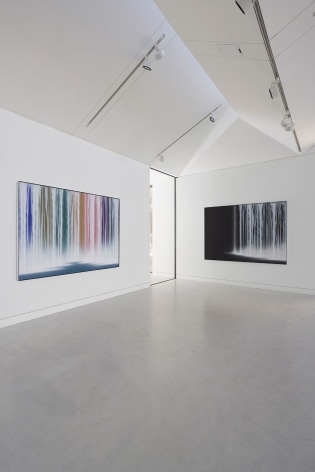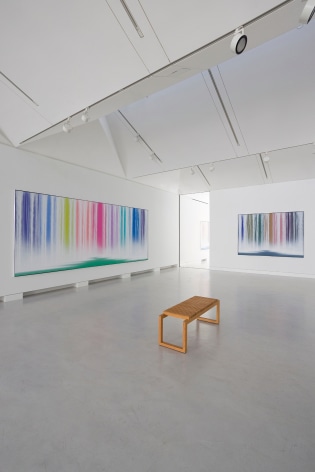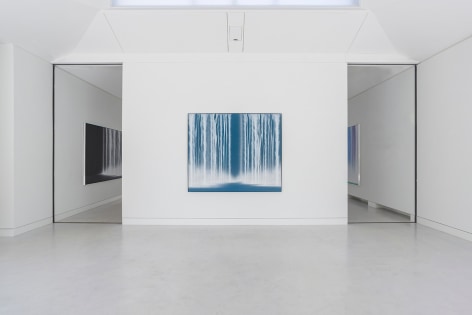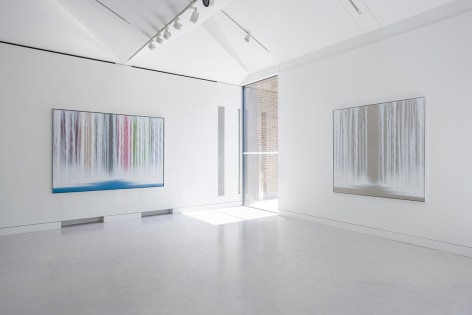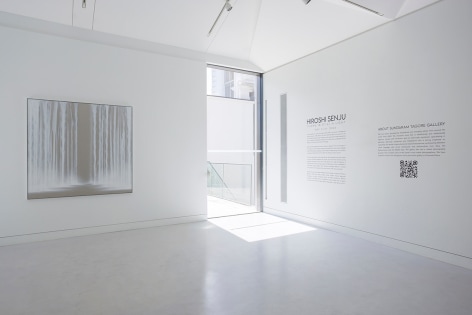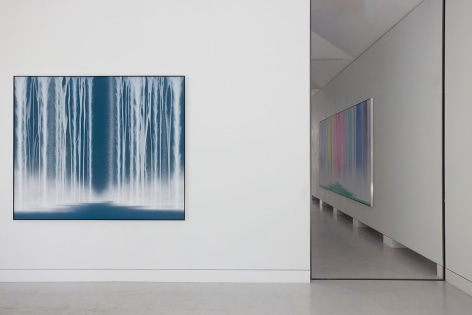
We are pleased to launch our London gallery with a new series of paintings by Hiroshi Senju (b. 1958, Tokyo). The New York-based artist is renowned for his monumental waterfall images installed in public spaces and museums around the world.
“Although I have deep-rooted ties to London and we have always had a strong client base in the city, there is simply no substitute for having an enduring physical presence,” says Sundaram Tagore. “I believe the best way to experience art—particularly the kind of tactile, process-driven art that we show—is to stand in front of it. We couldn’t be more delighted to bring Hiroshi Senju and our global group of artists to this dynamic, international city.”
In the new body of work Senju has created especially for London, the artist breathes new energy into his iconic black-and-white falls, suffusing them with color. Seen together, these immersive works celebrate a universal human experience—the power of the natural world to evoke awe and wonder.
Senju has been exploring the sublime power of nature for more than 30 years. He began painting waterfalls in the 1990s and today they are in the collections of The Metropolitan Museum of Art, New York; Los Angeles County Museum of Art; and Art Institute of Chicago, where a site-specific fluorescent waterfall installation was recently showcased in a gallery designed by Pritzker Prize-winner Tadao Ando.
In this body of work, Senju imagines stepping behind the falls to look at the landscape beyond it through the cascading curtain of water. Peering through this veil, he visualizes a vibrant scene, which he distills into abstract columns of color. In these works, the misty screen of white water is transformed into muted ribbons of crimson, orange, olive green and pale purple.
Senju was inspired to expand his color palette after his experience in New York during the pandemic lockdown. Working in isolation with ample time for keen observation, he became acutely aware of the immense range of shades within each leaf, flower and blade of grass in his garden. He found himself closely attuned to the changes around him as he watched the natural world shift from dull and lifeless in winter to vibrant and exuberant in spring. For him, this transformation reflected a sense of hope and optimism at a bleak time, which he sought to infuse in his work.
“Today with just small differences people fight, hatred grows and wars begin. But the natural world is a place of refuge and a common ground we share that transcends natural, cultural and ideological boundaries,” he says. The falls, in his view, are a powerful example of a life-giving, universal force that we can all appreciate, no matter how different we appear to be. Standing before these paintings, the senses and imagination are activated—one can almost hear the rushing water and feel the dampness in the air.
Senju created these works using bespoke natural pigments produced in Japan as well as manmade pigments. His robustly physical process involves pouring pigments downward from the top of paintings mimicking the trajectory of gushing water. He also uses spray guns and airbrushes to create a sensation of mist, fracturing light into a spectrum of color like a prism.
Senju’s decades-long preoccupation with waterfalls is an homage to the natural world. Although his deep respect for Japanese culture and traditions has given him a particular reverence for and aesthetic appreciation of nature’s qualities, he views these as collective values that unite humankind. As we continue to grapple with climate change, the visual immediacy of his falls are a potent reminder not only to respect but also protect what’s left of our environment.

